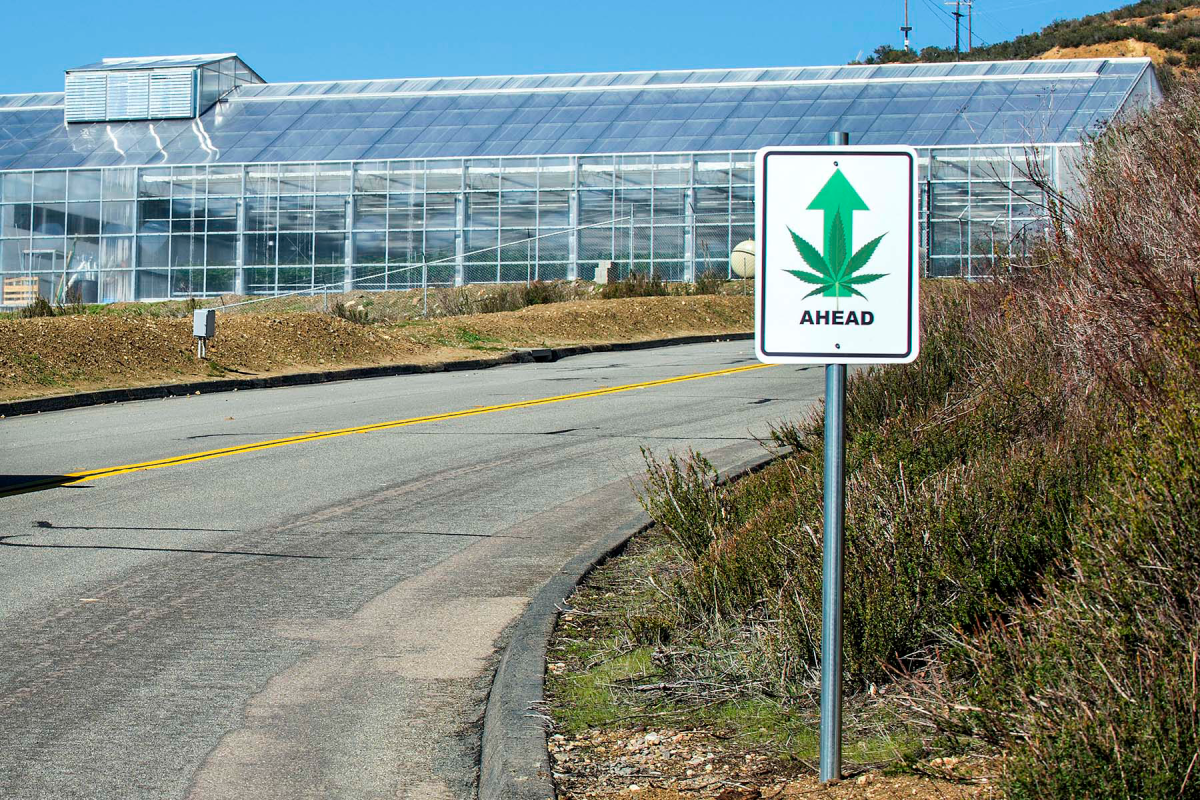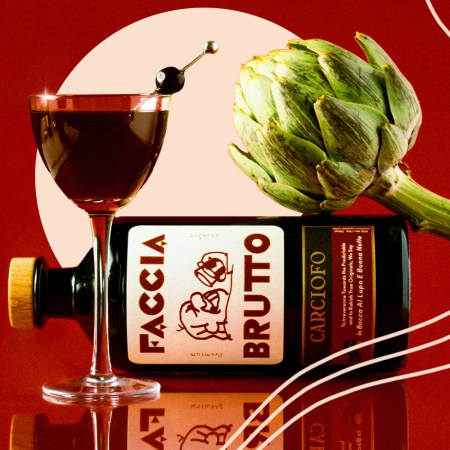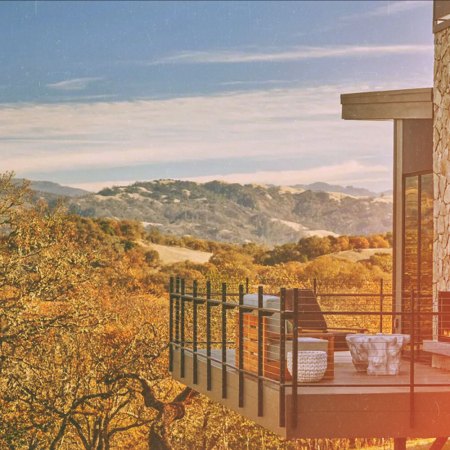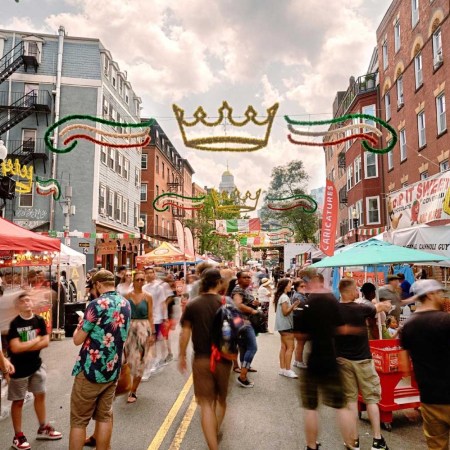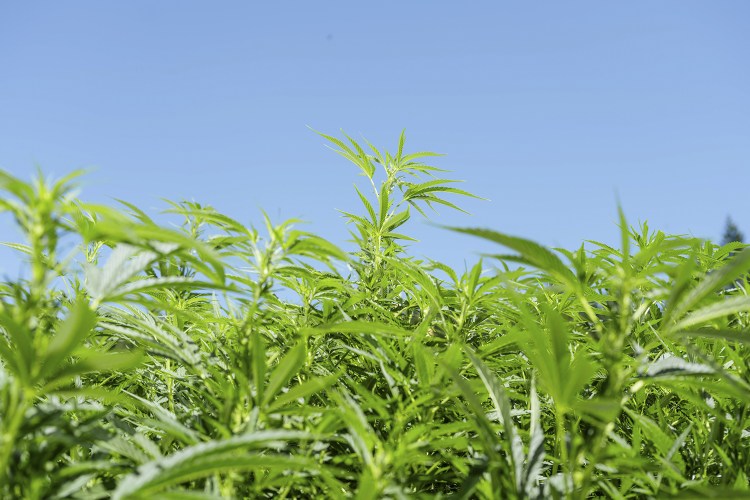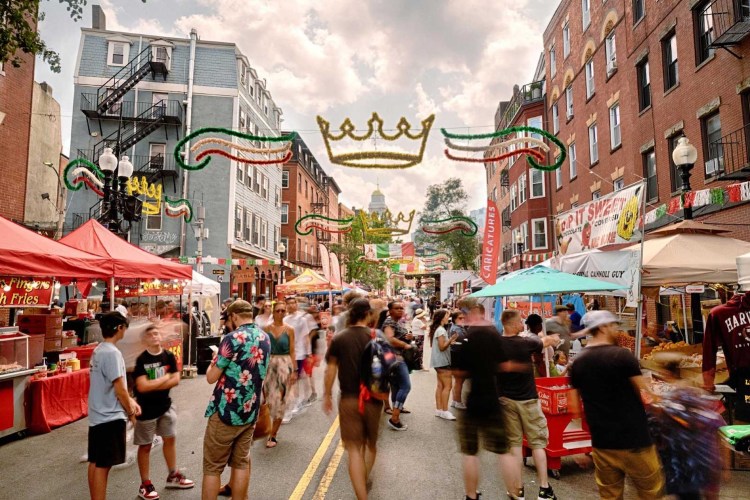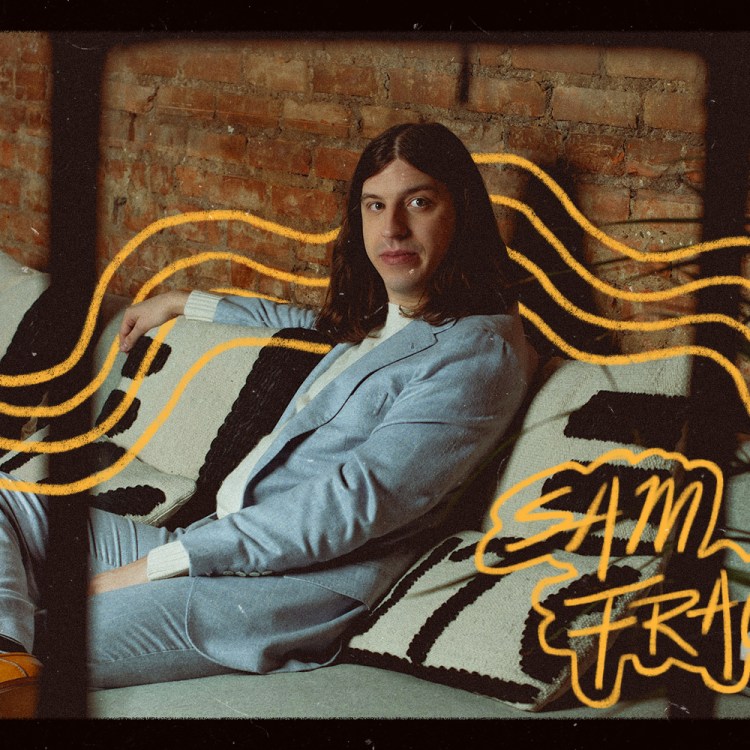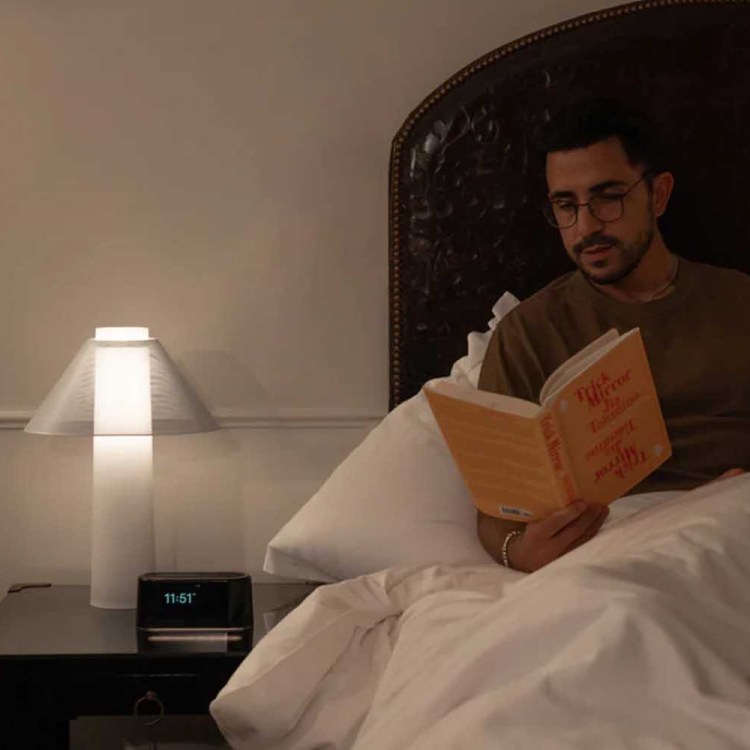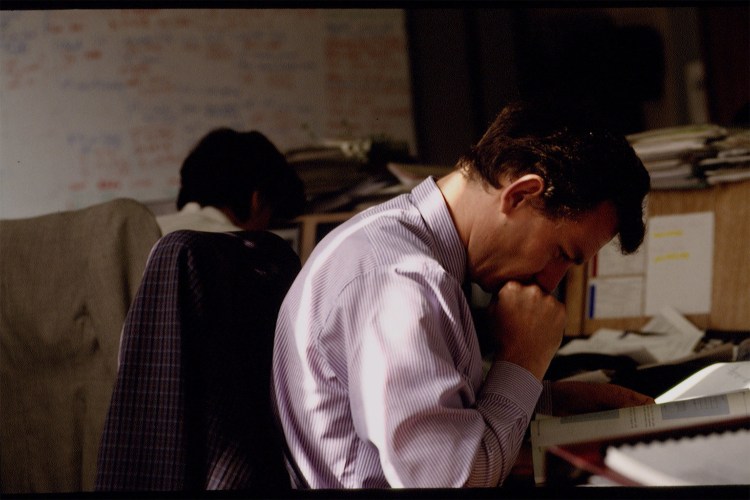The stretch of La Brea between Sunset and Santa Monica is always congested. But these days it’s swelling thanks to a new roadblock: the line of cars queuing up for the valet stand outside Lowell Café, a new Hollywood restaurant where you can order a joint and puff away right at your seat.
“We’re not open full time, yet,” Lowell Café Chef Andrea Drummer tells InsideHook. “On a slow day we’re doing over 600 covers.” On a busy day, they’ll turn over 800.
Drive by a Med Men, the popular line of dispensaries that are designed with the slick open-floor plans of an Apple Store, and you’ll see it teeming with customers and red-shirted employes.
Observers — both local and visiting — see this and remark that cannabis legalization is enjoying a kind of gold rush. But while Proposition 64 (cannabis legalization) won 57 percent of the vote in 2016, it’s only been ratified by 100 of the 500 counties in the state. Thus far, only 600 recreational dispensaries have opened in California, some of which aren’t operational yet. By contrast, Colorado has roughly the same amount … with a population barely a sixth the size of California’s.
According to a report by Archview and BDS Analytics, 80 percent of the cannabis market in California remains illegal. The same report found that while the legal market posted revenues of $2.5B last year, the black market saw an uptick as well, growing to $8.7B.
In April, The New York Times reported on a bust in Mendocino that nabbed 500 pounds of cannabis. Of the 14 million pounds of cannabis produced in the state every year, less than 20 percent of it is consumed here — the rest is shipped illegally. Fish and Wildlife reports unearthing twice as much illegally farmed pot since legalization, and destroyed 1.8 million plants last year, as opposed to 700,000 in 2017.
Prop 64 was supposed to stop this. So what’s holding everyone back?
The west, it seems, isn’t so wild. “We went from the largest unregulated industry in California to the most regulated industry in California,” says Josh Drayton, Communications Director for the California Cannabis Industry Association, an advocacy group.
Drayton has spent the better part of the year in Sacramento, working on any one of the 55 bills at the state legislature that touch cannabis in some way. Each one requires careful attention and feedback from people who are actually involved in the industry.
“We had a 45-day public comment period, then they’re redrafted, taking into account public comments, and then came back with the second draft of permanent regulations, which then opened a 15-day public comment period,” says Drayton. “During that time, our committees and our board of directors submitted 75 pages of public comments.”
Statewide regulations may be a moving target, but the truth is that cities are largely in control of issuing permits for new businesses. For instance, LA County is legal, but Santa Monica, Manhattan Beach and Hermosa are still under a ban.
“I wish I knew what they were waiting for,” says Drayton, airing slight frustration with the regulators, most of whom have no experience in the industry. “Hopefully we’ll see some movement here in the near future, but that’s kind of where we stand as of today.”
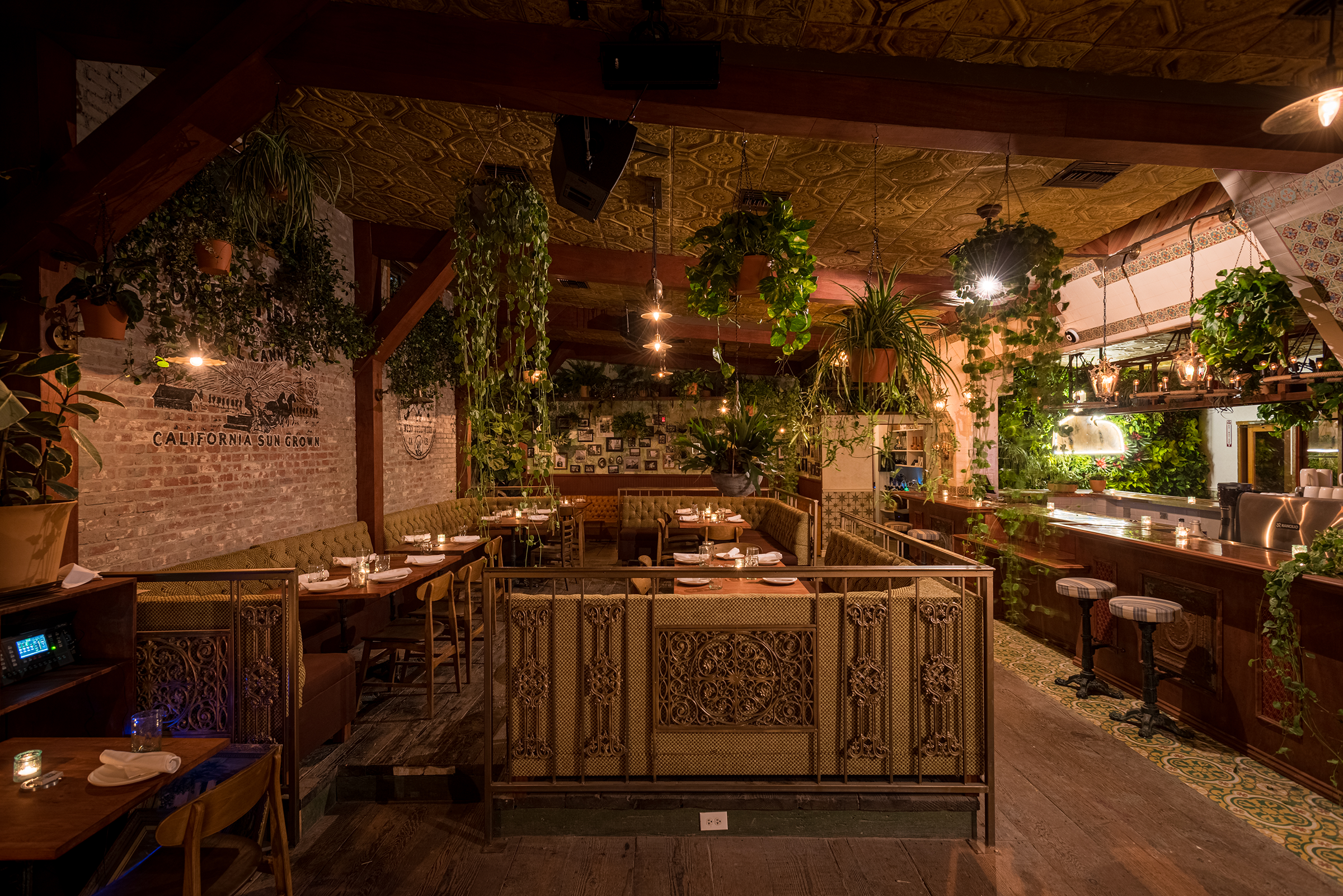
Since legalization, cities that lifted the ban have allowed applications for cannabis businesses in limited “rounds.” In the most recent round, they prioritized businesses with “social equity”: people previously convicted for cannabis offenses and those in zip codes adversely affected by the war on drugs.
While the intentions are noble, the policy is not without its challenges. Smart money (read: Venture Capital) has looked to exploit the system by seeking out social-equity candidates as collaborators who are little more than figureheads.
Eligibility has also presented a challenge. Drayton cites communities in Northern California, where the majority of residents — and seasoned cannabis experts — are white yet excluded: “The folks up there that have been cultivating for decades have been dealing with CAMP [for Campaign Against Marijuana Planting], a style of enforcement that uses military-grade helicopters, raiding farms and jailing people.”
And if merely identifying worthy candidates presents a challenge, consider the headaches associated with implementation. Social-equity candidates without backing require grants. “Let’s say we hand them over a check for $100,000 to get them off the ground,” says Drayton. “What do they do with that check? This is an all-cash industry. They don’t get banking. That’s the same challenge we all face in the industry.”
One of the beneficiaries of the social-equity program is Danna Lee, the CEO of Green Angels, a luxury delivery service in which the delivery drivers are all female. Lee is a former fashion model, and initially the Green Angels were all models, too — that was the pitch. Green Angels was profiled in GQ for delivering weed in New York City, which was (and still is) illegal. Soon after, they went underground only to resurface in LA, with a studio picture deal in tow. Two years ago, she and her partner received a social-equity license in Oakland.
“At first when I told him, ‘Okay. We’re going to do the social-equity route,’ he kind of resisted and was like, ‘Well that’s for people who are really struggling.’ And I was like, ‘Do you not remember getting handcuffed and going through the court process for years and what that did to you mentally?’ We talked about it for awhile, and finally he was like, ‘Yeah. You’re right. That did suck. Let’s sign up.’”
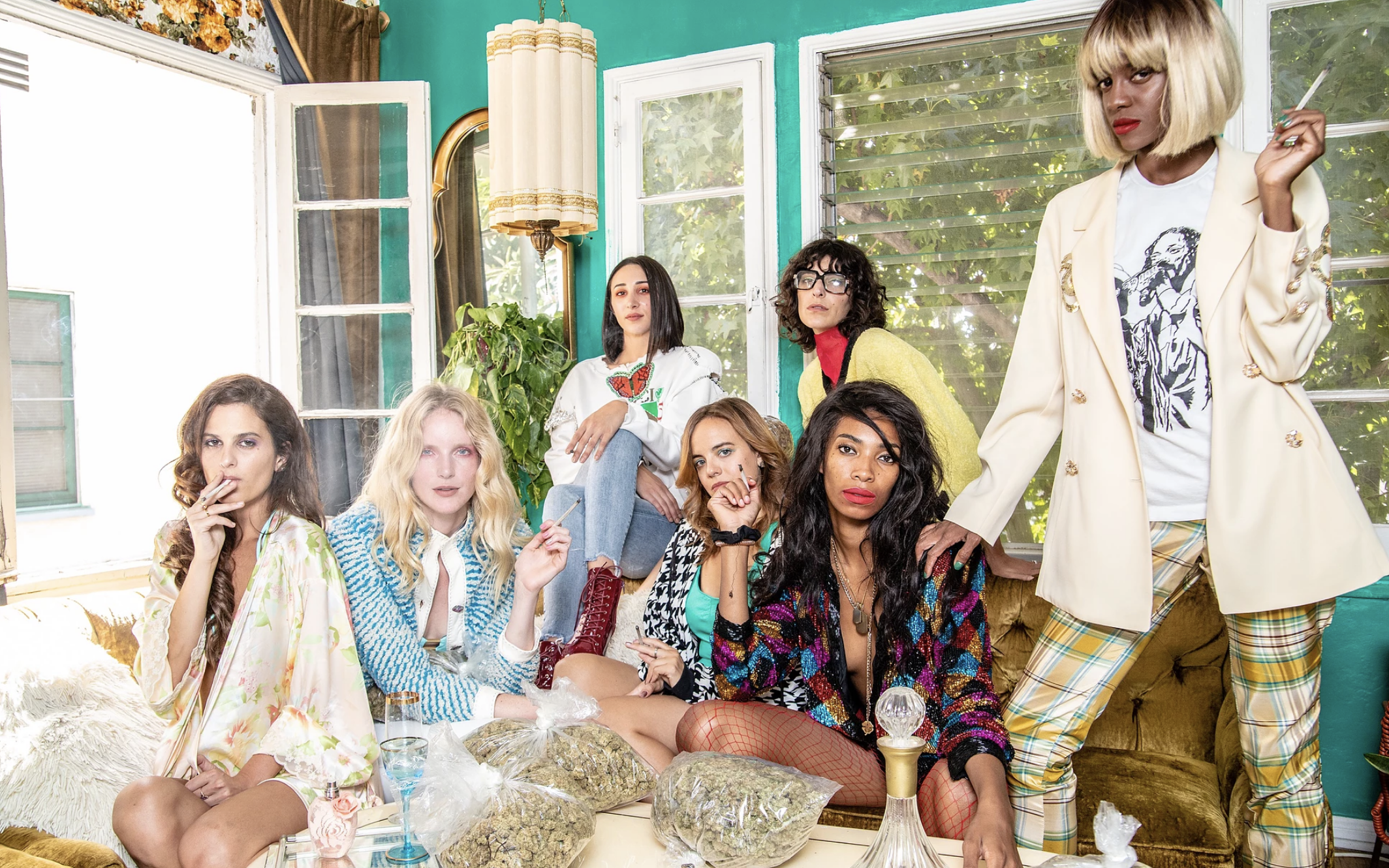
Lee and her partner have been in the industry for a long time. Her concern with the social-equity program is that cannabis is a risky business and many intrepid entrepreneurs don’t have the skill set required to hack it. “I do think over the next 10 years, you’re going to see a huge consolidation,” she says. “You’re going to see a lot of people price themselves out without even realizing it. I think that’s something that happened for a lot of the illegal shops: before they were getting shut down, they were undercutting themselves out of business.”
She recalls last year’s harvest, which was abnormally fecund. The price of a pound dropped below $1,000; dispensaries gobbled it up and started selling eighths-of-an-ounce for $25. But growers thought they weren’t making money; some dropped out, while sales at hydroponic stores plummeted. “[Except] for the people who were smart and picked up everything at bottom-barrel prices and then held onto it for a year,” says Lee. “Those people were able to quadruple their money because people quit growing and the price of a pound went up.”
Now prices are high again, and Lee anticipates growers getting back in. “You have to really pay attention to these things,” she says. “I think some people just operate day-to-day or week-to-week and they’re not really reading the market.”
Lee labors over her profit and loss statements, and takes a lot of pride in how lean she runs her business. “If you’re not able to do $1 million a month, you’re not going to break even. In fact, you could be losing money.” She cites marketing budgets, salaries, attorney fees and high taxes (right now, they’re at 33%). “And then you get to the point of, okay, now you’re doing $10 million a year in revenue to profit $1 million. That’s a lot of risks to make $1 million.”
Hence why the Bureau of Cannabis Control prefers for social-equity candidates to pair with established businesses. Ideally, the partnership yields a knowledge transfer: one side brings the cannabis know-how, the other side brings experience in navigating legal and legislative challenges. However, while these deals ensure that the social-equity candidate gets 51% ownership, that doesn’t necessarily mean they get 51% of the profits.
Jeffthe420Chef has been in the cannabis catering business for over a decade. He’s currently collaborating with a social-equity candidate, who approached him first. “Unfortunately a lot of social-equity applicants are being taken advantage of,” he says. “There are a lot of companies out there that are using the social equity applicant as a tool to get what they want, but they’re not giving the social-equity applicant what they’re supposed to be giving them, which is an over-51% ownership stake to help them build generational wealth. Forcing it down people’s throats in this way is backfiring.”
Jeff (who prefers not to disclose his last name) isn’t your average chef. He’s more of an inventor. He devised a way to extract the pungent, dank aroma associated with cannabis and replace it via contact osmosis with, well, whatever you want. For Jeff, this meant cooking with cannabis as a way to help medical users manage their pain without having to smoke. His product is unique: when we met, he offered me a cannabis joint that looked, smelled and tasted like a clove cigarette. He also sprinkled his signature oregaNO into my palm, a seasoning that looks and tastes like the dried Italian herb but is actually cannabis. Each teaspoon contains a buzzworthy .5mg of THC.
Now that cannabis is legal recreationally, Jeff is steering towards that market. He recently received a permit to open a lounge, which he and his partners applied for with the Bureau of Cannabis Control and with the City of West Hollywood. That was two years ago. “We submitted the application, waited a year for them to get back to us,” he says. “They finally told us last December that we got the golden ticket for the license. Then it took about another year to get to where we are right now.”
But it’s not over. Now they have to get a business license from the City of West Hollywood. And once they open, the state law for lounges stipulates that buyers can only purchase what one could reasonably consume on site. “You can’t buy 1000 milligrams of cannabis and then take home 900 milligrams if you’ve only had a 100,” he says.
Making edibles comes with its own set of rules, too. “You have to have special walls that go floor to ceiling, the space has to be enclosed, it has to be made as a kitchen,” explains Jared Danzer, president of Jeffthe420Chef. “It needs to meet the guidelines of the Department of Health.” On top of that, they’re trying to consider what the FDA might require if — or when — the federal government legalizes. Complying with current regulations while anticipating future regulations requires a good lawyer, which isn’t a small expense for a startup.
“All these little hoops we have to go through to make sure that we can actually process this legally adds up,” says Jeff. “We have it prepackaged, pretested and predosed, brought back into our facility and sold to the consumer.” Packaging presents another set of challenges. It has to be child-resistant yet accessible for an elderly person with arthritis, a condition alleviated by cannabis.
“We went from an industry that did not have child-resistant packaging to now every single item requiring child-resistant packaging,” says Drayton. “Pre-rolls are in plastic tubes now and all of that is non-recyclable. As a state that has banned single-use plastic bags, it’s something that we need to be paying attention to when we’re mandating these extreme levels of child-resistant packaging and the waste that they’re creating. That’s a big deal.”
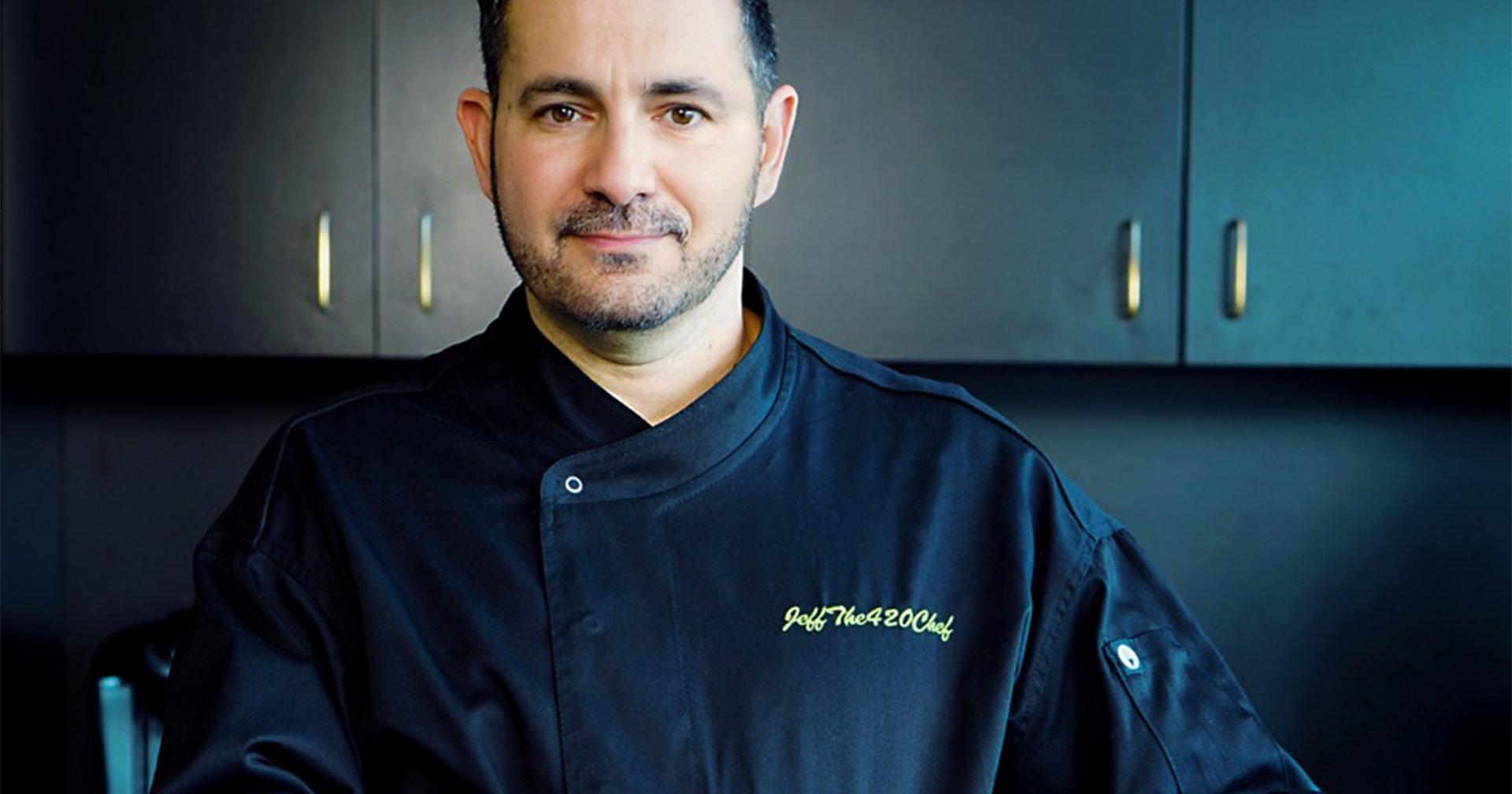
Such is life; you solve one problem but in doing so create another. Jared and Jeff welcome this challenge, though. “I am happy trying to determine packaging that would be compliant but also sustainable. As a cannabis company I feel it’s our duty to have sustainable packaging,” says Danzer.
He has a point. Go to the dispensary and look at the packaging on a single-use vape cartridge. It comes in a box wrapped in plastic. Inside is a plastic infill. The cartridge is also plastic, and dispensed of once it’s empty. Jared presents his solution to me with a smile: a tin case that you have to pinch to open and can bring back to the shop for a refill.
Lowell Café, which is close to the site for Jeff’s lounge, can’t (as of yet) make edibles onsite, but they can sell edibles made offsite for you to consume at the table. On a recent visit, I ordered a Défoncé chocolate bar from our “Flower Host,” a lovely woman in a flowing skirt who made recommendations like a sommelier, then tapped an iPad to fulfill the order, payment and all.
It’s likely that Lowell found a loophole here. Because it’s registered as a restaurant, not as a dispensary, they can accept credit-card payments. Most dispensaries cannot handle credit cards because banks don’t want to touch cannabis.
“There’s a lot of fear from banks that they will lose federal insurance because this is still a Schedule 1 drug at the federal level,” says Drayton. “Major banks don’t really take on cannabis at this point. That’s why we see a couple of different federal bills that are seeking to fix that: the STATES Act, Safe Banking Act as well as the MORE Act. So it is drawing more attention.”
In the eyes of a financial institution, businesses like the Green Angels who once operated illegally are high-risk clients. The due diligence required to ensure that a cash business isn’t up to anything funny is time consuming. Bankers extended this same treatment to distilleries, taverns and vitners in 1933, and many large banks still won’t touch mom-and-pop liquor stores. Stigmas have a way of lasting, which is why so many cannabis brands are investing heavily in marketing and design that appeals to an affluent audience. Med Men looks like an Apple Store, not a dispensary. Lowell Café feels like any other sundrenched gastropub in LA.
There are other similarities between the repeal of the 18th Amendment and Prop 64. States sought to control the sale and potency of hooch, which is why some still require grocers and convenience stores to sell beer that contains 3.2% ABV or less. To buy hard stuff in North Carolina, one must visit an ABC, a state-run liquor store that diverts profits to substance-abuse and alcohol-related treatment programs. California is using the tax revenue from cannabis in a similar fashion; Oregon uses it for a general education fund. There are age restrictions. You can’t imbibe either substance and drive.
It’s important to point out, though, that cannabis and alcohol don’t actually have all that much in common. Alcohol was made illegal because of all of the problems it caused. But eradication was always unrealistic; we’ve always been a nation of drinkers — it’s in our European heritage.
As W.J. Rorabaugh notes in Prohibition: A Concise History, Americans started making corn whiskey after the British cut off their supply of rum from the West Indies during the Revolution. Successful politicians, like George Washington, coaxed voters with it. Whiskey stuck, and then proliferated because it was often cleaner than water. Men began to drink a lot of it. For the first century of America’s existence, saloons admitted men only, and violence was rampant within them — as well as at home, where wives and children often bore the brunt of nightlong benders.
Prohibition was the pendulum shift after a century of violent inebriation. And it worked. Alcohol consumption was reduced to a third of what it was before the Volstead Act, and didn’t rise again until the 1950s, when Anheuser-Busch started advertising during sports games. According to the U.S. Department of Health and Human Services, the average person’s annual consumption was 2.6 gallons in 1910, 1.02 in 1935, 2.7 in 1980 and 2.3 in 2014.
Cannabis, according to a study by RAND, hasn’t caused unrest or societal problems in any civilization where it’s been prevalent. A recent finding indicates that it was first used in Chinese burial grounds 2,500 years ago. Since then, it’s been distributed worldwide, and remains one of the most commonly used substances.
Most Americans, though, didn’t use the stuff until the 1970s. It was first banned in the United States in 1937 at the hands of William Randolph Hearst and Henry Anslinger, America’s first drug czar, who ensured it was fully illegal in the 1950s. Both men hated Mexicans, who had been smoking it long before the Anglos arrived. Black Americans also used it, and it had a strong association with the blues and jazz.
In his book Chasing the Scream, Johann Hari tells of how Anslinger had a personal hatred of Black people (Billie Holiday in particular), and utilized drugs like cannabis as a tool to imprison them. Hearst also loathed that the government subsidized hemp for paper. As the nation’s largest newspaper man and owner of vast stretches of timber, he wanted that changed. So he sent his lobbyists to Washington and printed ads and articles demonizing marijuana, a term derived from Mexican Spanish; he didn’t want to use cannabis, a European word.
Here at the Lowell Café, people are chatting happily over nachos and burgers. It’s loud like any restaurant in town. Servers are delivering cannabis to the tables. People are sparking up. Smoke is rising into the hospital-grade air filters above. The volume of conversation is slowly softening. People are leaning back. It’s now very calm in the restaurant. Strangers are smiling at each other. The general ambience around the place is one of relief — but it hasn’t been come by easily.
This article was featured in the InsideHook SF newsletter. Sign up now for more from the Bay Area.
